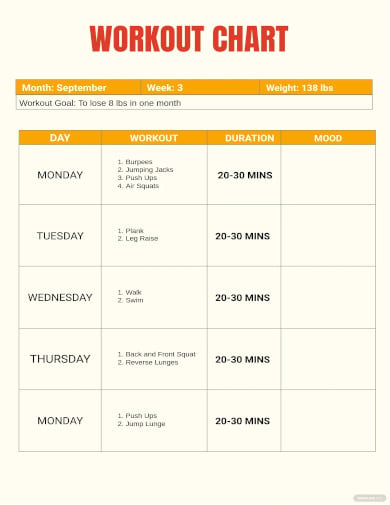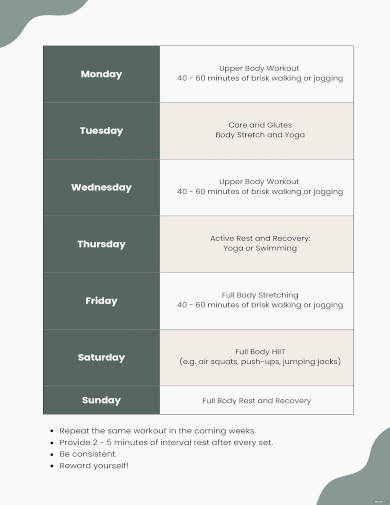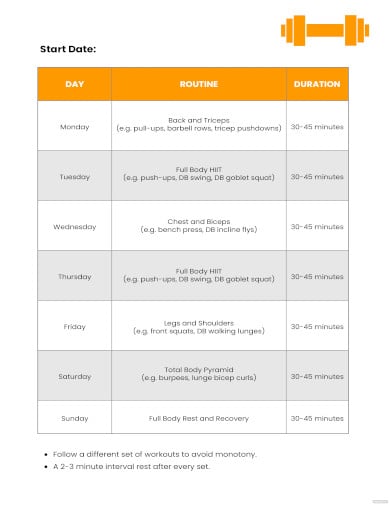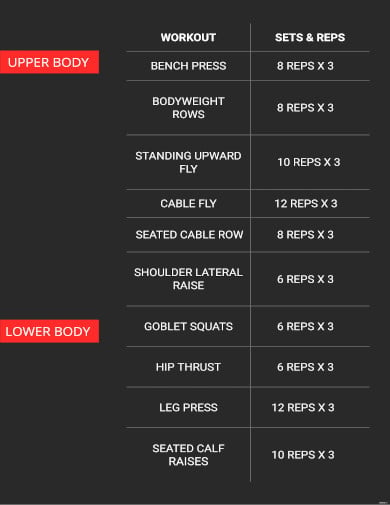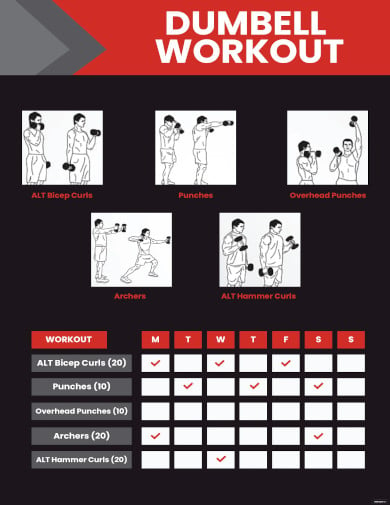15+ Workout Chart Templates
The way to a fit body starts in the mind. How often have you started a training regimen, only to abandon it within the first week? Perhaps it’s a matter of discipline or a matter of sheer willpower. More often than not, it’s in the way you prepare to tackle this ongoing challenge.
Before you say workout schedules don’t work for you, take five minutes and look through these chart templates. These cover everything you might need to ensure better chances of following through—from daily and workout schedules, progress charts, logs, and exercise information charts. If you want to log in to your workout sheets, our templates are ideal for your needs. We have workout chart templates for various uses such as a workout planner, a gym day chart, a workout table for bodybuilding, and even employee fitness plans.
Get all this as free PDFs and see if they don’t see you through the long game.
Simple Workout Chart Template
Weekly Workout Chart Template
Daily Workout Chart Template
Sample Gym Workout Chart Template
Basic Dumbell Workout Chart Template
Weekly Workout Schedule Chart Template
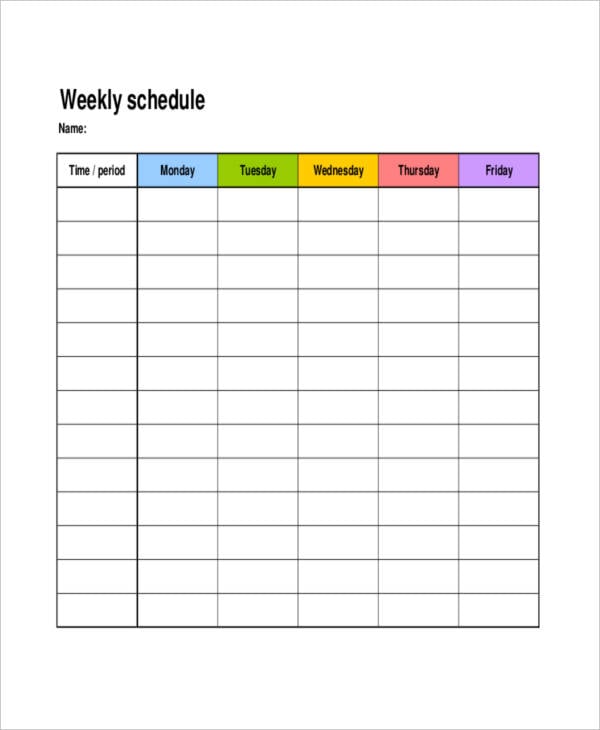 calendarpedia.com
calendarpedia.comPrintable Daily Workout Table Chart Template
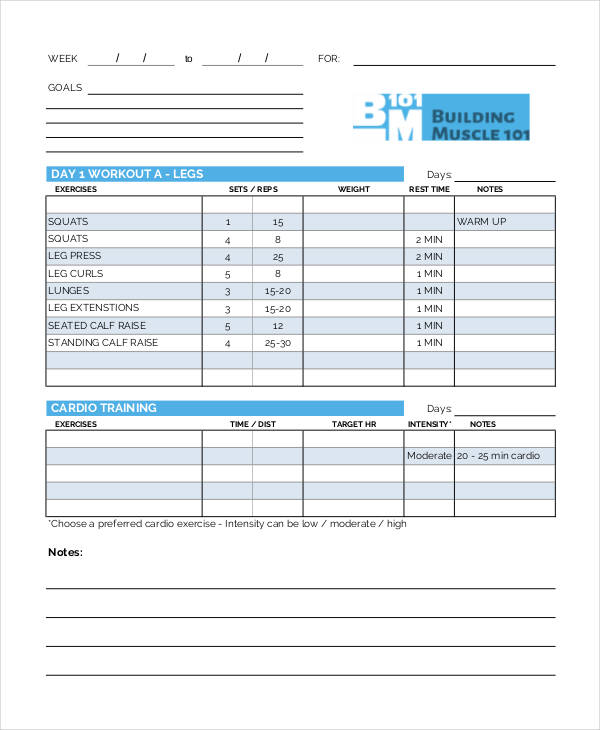 building-muscle101.com
building-muscle101.comWeight Lifting Workout Chart Template
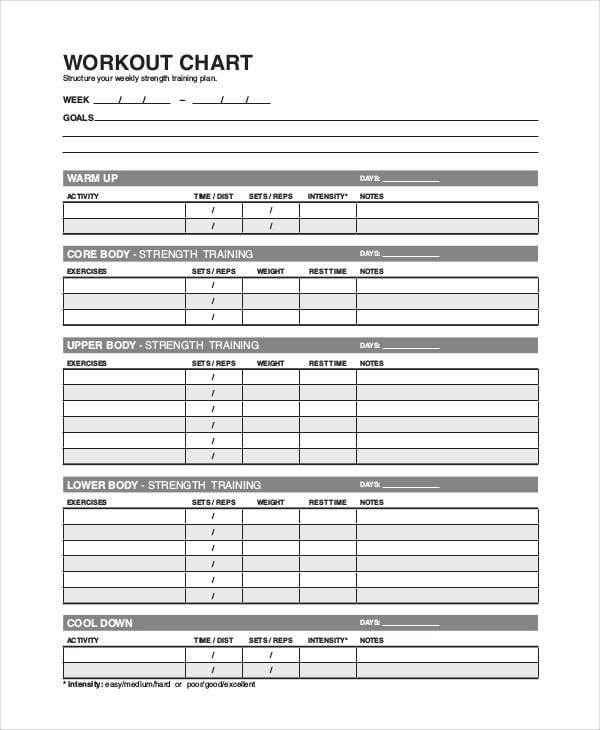 mymission.lamission.edu
mymission.lamission.eduWeight Training Calendar Workout Chart Template
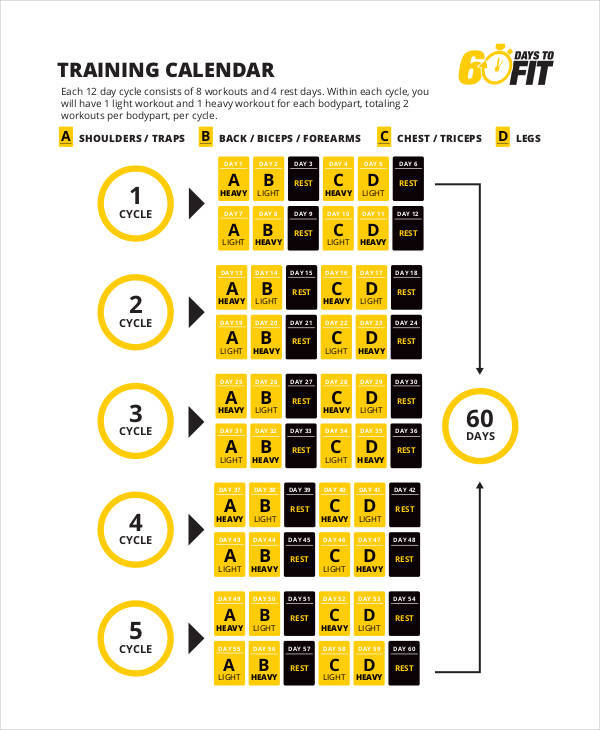 muscleandfitness.com
muscleandfitness.comProgress Workout Sheet Chart Template
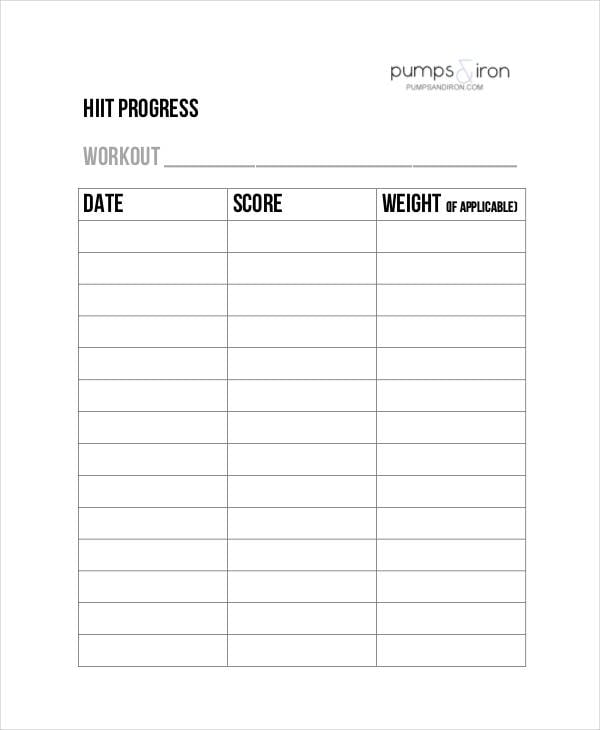 pumpsandiron.com
pumpsandiron.comHow These Workout Charts Can Help You
These workout charts are meant to help you be more deliberate about your routines—whether you are persisting through trial and error, hunting for a set of tools to help you manage your workout plan habits, or whether you are just starting and hedging the risks of flaming out early.
The key is in tallying small wins until, over time, you start seeing results. Making sure you develop a chain of successive workouts over a committed period is your first battle.
Some charts to help you win this round:
- Daily Workout Chart Template—This is a five-day workout simple plan that parcels out exercises targeted at specific body parts per day (legs, triceps, cardio, etc.) as well as recommended sets/reps and space for sample notes. (You can also use the Blank Workout Chart Template to develop your routines, or create from scratch using an Excel Chart.)
- Weekly Workout Chart Template—Unassuming and unintimidating. All you have to do is mark at least three days in the week you’ve followed your workout routine. Start simple to up your chances of following through.
- Monthly Workout Chart Template—This will give you a much larger scope to work with. Use it as a Behavior Flowchart to mark every day you’ve won against yourself and did the workout. Once you see a chain-forming, all you have to do is not break that chain.
The Biceps Workout Chart Template and the Chest Workout Chart Template are similarly helpful charts to have on your wall next to your calendars.
Understanding what you’re doing and why as well as tracking your progress will go a long way to motivating and helping you accomplish what is, to others, a formidable task.
Monthly Employee Workout Plan Chart Template
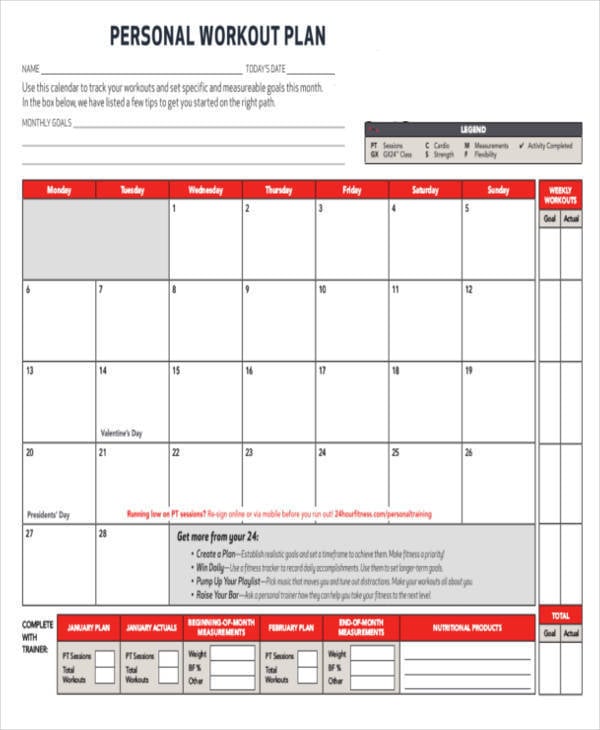 24hourfitness.com
24hourfitness.comBlank Bodybuilding Workout Log Chart Template
 fitness-and-bodybuilding-workouts.com
fitness-and-bodybuilding-workouts.comChest Exercise Workout Chart Template
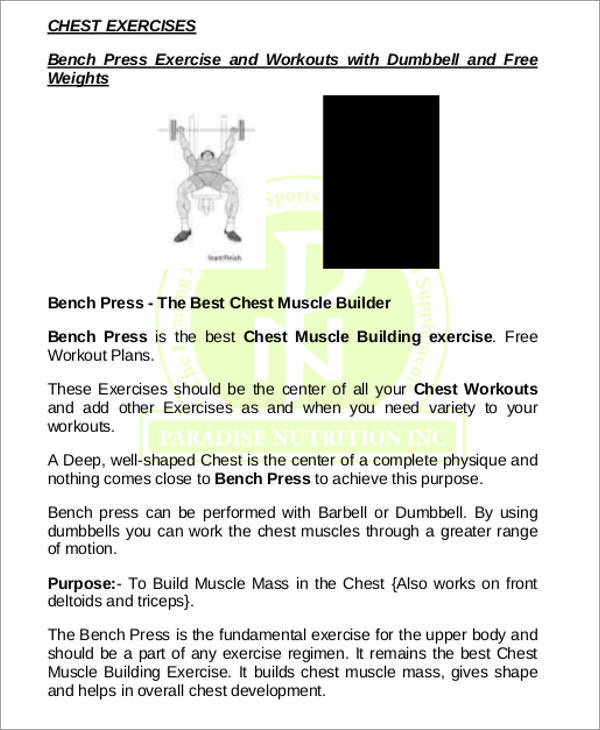 ultimatenutritionindia.com
ultimatenutritionindia.comGym Day Biceps Workout Chart Template
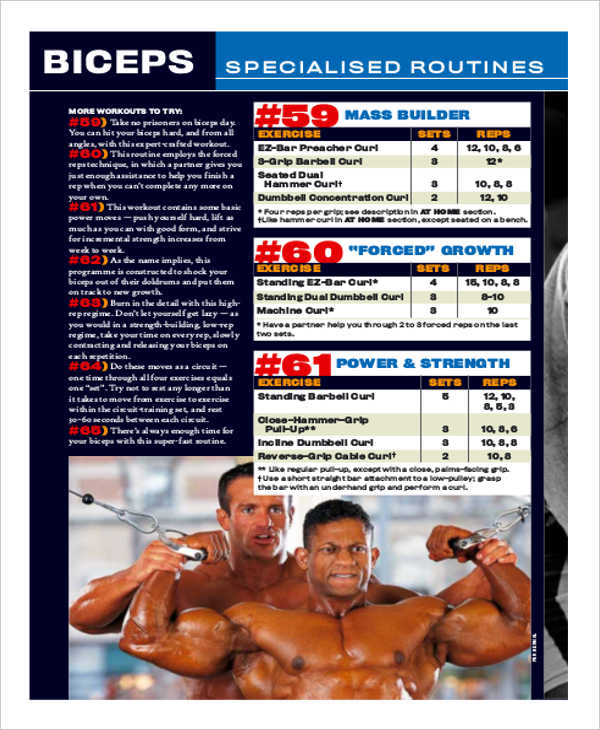 olneyfitnessclub.co.uk
olneyfitnessclub.co.ukWorkout Weekly Planner Chart
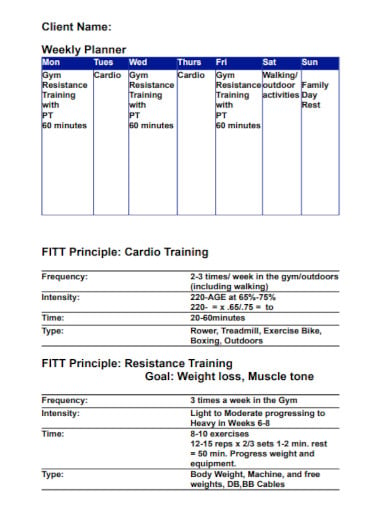 fitnessmoves.com.au
fitnessmoves.com.auWorkout Fitness Plan Chart for Women
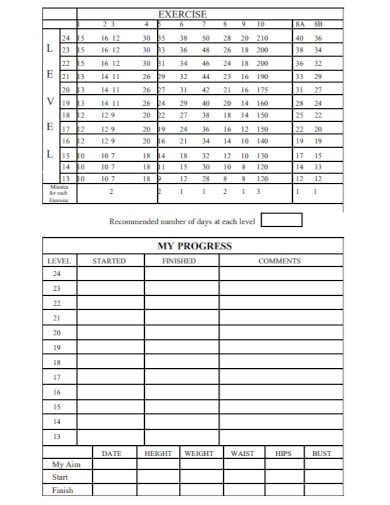 crpf.gov.in
crpf.gov.inHow to Use These Templates
These basic charts are designed to be useful right away. Short of having you develop a plan from the ground up, the built-in features of each chart in PDF will give you an informed (and therefore wiser) start.
They are all available to download as PDF files and print out for free, so take what you need and enable yourself to accomplish your goals strategically.
Bonus Chart for Workout Success
Want to track how your progress changes over time?
If you’re in this for the long haul, as in training for marathons, triathlons, and other high-level sports, a Control Plan Chart will help you track your performance over time as you strain above or fall below your average. No long-term workout strategy should miss this.
More in Charts
| 31+ Pedigree Chart Templates - PDF, DOC, Excel | 8+ Partnership Organizational Chart Templates in PDF | Word | Google Docs | Pages |
| 10+ Seating Plan Templates in AI | InDesign | PSD | Publisher | Word | Pages | Docs | PDF | 10+ Height And Weight Conversion Chart Templates in Illustrator | PDF |
| 14+ Color Wheel Chart Templates | 10+ Family Tree Organization Chart in Docs | Word | Pages | Editable PDF | Excel | Numbers | PDF |
| FREE 10+ Research Gantt Chart Templates in PDF | MS Word | FREE 5+ Research Process Flow Chart Templates in PDF | MS Word |
| 18+ Research Flow Chart Templates in PDF | MS Word | 10+ Family Tree Chart in Google Docs | Word | Pages | Excel | Numbers | Keynotes | Powerpoint | Editable PDF | PDF |
| 10+ Office Gantt Chart Templates in PDF | Google Sheets | Word | Excel | Pages | Numbers | Classroom Seating Chart Template - 25+ Word, Excel, PDF Format Download! |
| 17+ Office Flowchart Templates in PDF | 10+ Church Organizational Chart Templates in PDF | DOC |
| 5+ Nursing Organizational Chart Templates in PDF | 33+ Company Organizational Chart Templates in Google Docs | Word | Pages | Excel | PDF |
| 7+ Real Estate Organization Chart Templates in Word | Apple Pages | Powerpoint | Keynote | Google Slides | Google Docs | PDF | 8+ Expense Chart Templates in PDF |
| 19+ Management Chart Templates | 15+ Management Flow Chart Templates in PDF |
| 16+ Training Flow Chart Templates in Google Docs | Word | Pages | PDF | 6+ Payroll Flowchart Templates in PDF | DOC |
| 11+ Construction Organisational Chart Templates in Google Docs | Word | Pages | PDF | 7+ Finance Organizational Chart Templates in Google Docs | Word | Pages | PDF |
| 6+ Agency Organizational Chart Templates in Google Docs | Word | Pages | PDF | 12+ Office Organizational Chart Templates in Google Docs | Word | Pages | PDF |
| 14+ School Organizational Chart Templates in Google Docs | Word | Pages | PDF | 12+ Technology Organizational Chart Templates in Google Docs | Word | Pages | PDF |
| 15+ IT Organizational Chart Templates in Google Docs | Word | Pages | PDF | 4+ Marketing Organizational Chart Templates in Google Docs | Word | Pages | PDF |
| 16+ Simple Chart Templates in Google Docs | Word | AI | InDesign | PSD | Publisher | Pages | PDF | XLS | 22+ Department Chart Templates in Google Docs | Word | Pages | PDF |
| 11+ Education Organizational Chart Templates in Google Docs | Words | Pages | Numbers | PDF | XLS | 15+ Company Chart Templates in Google Docs | Word | Pages | PDF |
| 13+ Daily Chart Templates in Google Docs | Word | Pages | PDF | XLS | 10+ Fundraising Chart Templates |
| 14+ Seating Chart Templates | 5+ Workflow Chart Templates |
| 11+ Weekly Chart Templates | 3+ Mind Map Chart Templates |
| 5+ Kid's Chart Templates | 18+ Chore Chart Templates |
| 20+ Comparison Chart Templates | 29+ Timeline Chart Templates |
| 18+ Flow Chart Templates | 9+ Monthly Chart Templates |
| 24+ Organizational Chart Templates | 15+ Growth Chart Templates |
| 15+ Timeline Chart Templates | 16+ Incident Flow Chart Templates |
| 10+ Excel Chart Templates | 7+ Excel Chart Templates |
| 13+ Project Flow Chart Templates | 7+ Marketing Gantt Chart Templates in PDF |
| 8+ Family Genogram Templates | 9+ Marketing Flow Chart Templates in Google Docs | Word | Page | PDF |
| 13+ Simple Wedding Seating Chart Templates | 7+ Wedding Timeline Templates |
| 6+ Sales Chart Templates | 5+ Sales Flowchart Templates |
| How to Create a Flowchart [10+ Templates to Download] | 10+ Flow Chart Templates in Apple Pages |
| 17+ Flow Chart Templates in Google Docs | 10+ Flow Chart Templates in PDF |
| 10+ Flow Chart Templates in Word | 10+ Chart Templates in Google Sheets |
| 12+ Seating Chart Templates | 12+ Seating Chart Templates in Word |
| 17+ Seating Chart Templates in Google Docs | 10+ Chart Templates in Apple Numbers |
| 10+ Chart Templates in Excel | 10+ Chart Templates in Google Docs |
| 11+ Chart Templates in Apple Pages | 10+ Chart Templates in PDF |
| 10+ Chart Templates in Word | 12+ Gantt Chart Templates |
| FREE 12+ Seating Chart Templates in Word | Publisher | inDesign | Photoshop |Illustrator | 13+ Timeline Chart Templates |
| 13+ Chore Chart Templates | 10+ Flow Chart Templates |
| 10+ Chart Templates | 5+ Banner Seating Chart Designs & Templates - PSD, AI |
| 3+ Navy Seating Chart Designs & Templates - PSD, AI | Acrylic Seating Chart Templates - PSD, AI |
| World Seating Chart Templates - PSD, AI | 5+ Photo Seating Chart Designs & Templates - PSD, AI |
| 3+ Travel Seating Chart Designs & Templates - PSD, AI | 4+ Gold Seating Chart Designs & Templates - PSD |
| 3+ Floral Seating Chart Designs & Templates - PSD, AI | 9+ Guest Seating Chart Designs & Templates - PSD, AI |
| 11+ Modern Seating Chart Designs & Templates - PSD, AI | 10+ Wedding Seating Chart Templates |
| Free Potty Training Chart Templates | 16 Temperature Chart Templates- Samples, Examples |
| 6 Table Chart Templates - Samples, Examples | How to Use Excel Chart Templates |
| 33 Sample Flow Chart Templates | 8 Chord Chart Templates - Samples, Examples |
| What Is a Gantt Chart Template? | 6 Music Chart Templates - PDF |

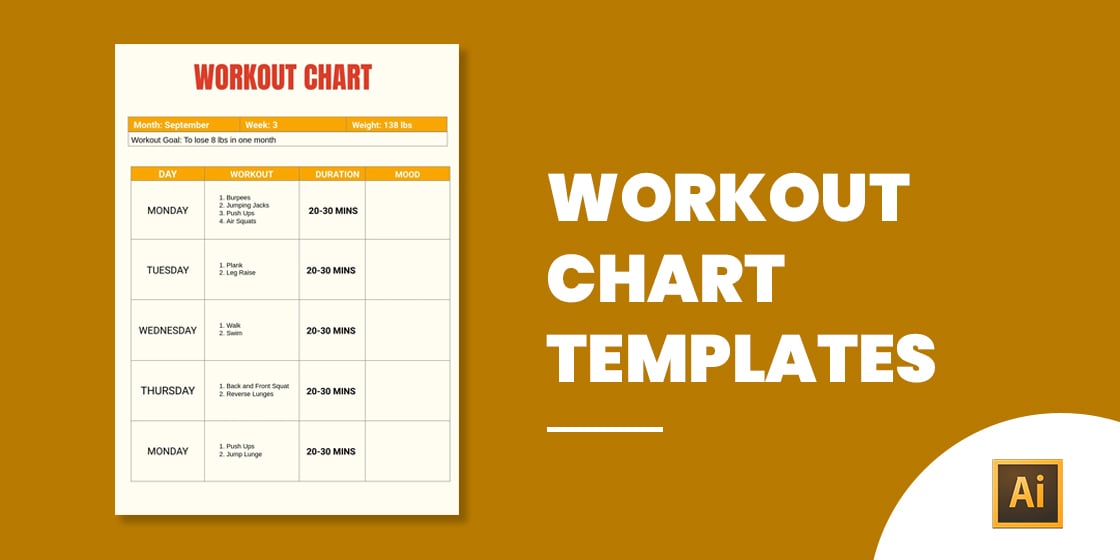
 calendarpedia.com
calendarpedia.com building-muscle101.com
building-muscle101.com mymission.lamission.edu
mymission.lamission.edu muscleandfitness.com
muscleandfitness.com pumpsandiron.com
pumpsandiron.com 24hourfitness.com
24hourfitness.com fitness-and-bodybuilding-workouts.com
fitness-and-bodybuilding-workouts.com ultimatenutritionindia.com
ultimatenutritionindia.com olneyfitnessclub.co.uk
olneyfitnessclub.co.uk fitnessmoves.com.au
fitnessmoves.com.au crpf.gov.in
crpf.gov.in




